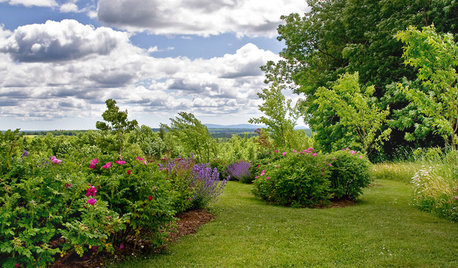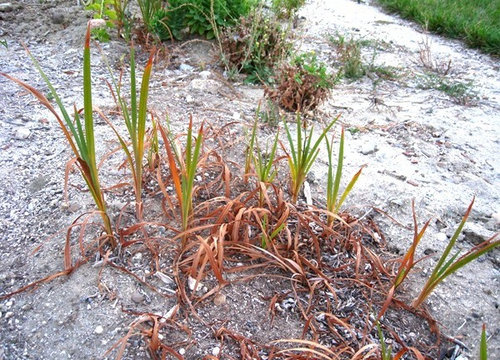help w/ clay soil and penstemons, crocosmia, etc.
aimeekitty
12 years ago
Related Stories

GARDENING GUIDESHow to Stop Worrying and Start Loving Clay Soil
Clay has many more benefits than you might imagine
Full Story
GARDENING GUIDESInvite Cellophane Bees to Your Garden by Providing Patches of Bare Soil
Look for cellophane bees (Colletes) pollinating flowering trees and shrubs in U.S. gardens this spring
Full Story
KITCHEN DESIGNKey Measurements to Help You Design Your Kitchen
Get the ideal kitchen setup by understanding spatial relationships, building dimensions and work zones
Full Story
GARDENING GUIDES6 Native Ground Covers for Tough, Dry Spots
Sun beating down on your sandy gravel? Thick shade darkening your clay soil? There’s a ground cover here for you
Full Story
GARDENING GUIDESGarden Myths to Debunk as You Dig This Fall and Rest Over Winter
Termites hate wood mulch, don’t amend soil for trees, avoid gravel in planters — and more nuggets of garden wisdom
Full Story
EARTH DAYHow to Design a Garden for Native Bees
Create a garden that not only looks beautiful but also nurtures native bees — and helps other wildlife in the process
Full Story
EARTH DAYGrow a Beautiful Garden With Ecofriendly Greywater
Reducing home water waste means lower bills and a healthier planet. Here's how to set up a greywater home irrigation system that can help
Full Story
LANDSCAPE DESIGNYour Mini Guide to Great Garden Edges
Get the scoop on trenches to the skinny on bender board, to help keep your garden beds as tidy as you like
Full Story
GARDENING GUIDESMake Sure You Read This Before Buying New Plants
Follow these 10 plant-selection tips to avoid buyer’s remorse
Full Story
INSPIRING GARDENSInside Houzz: A Waterfront Property Ditches the Grass for a Garden
New drought-tolerant plantings and outdoor gathering spaces help this California backyard take in the view without wasting space or water
Full Story






girlgroupgirl
ianna
Related Professionals
Ashburn Landscape Architects & Landscape Designers · Ilchester Landscape Architects & Landscape Designers · Middle River Landscape Architects & Landscape Designers · Vernon Hills Landscape Architects & Landscape Designers · Arden-Arcade Landscape Contractors · Inglewood Landscape Contractors · Lynwood Landscape Contractors · Round Lake Landscape Contractors · Saint John Landscape Contractors · Setauket-East Setauket Landscape Contractors · Houston Roofing & Gutters · Murfreesboro Roofing & Gutters · Annapolis Siding & Exteriors · Eau Claire Siding & Exteriors · Racine Siding & ExteriorsaimeekittyOriginal Author
ianna
aimeekittyOriginal Author
hosenemesis
ianna